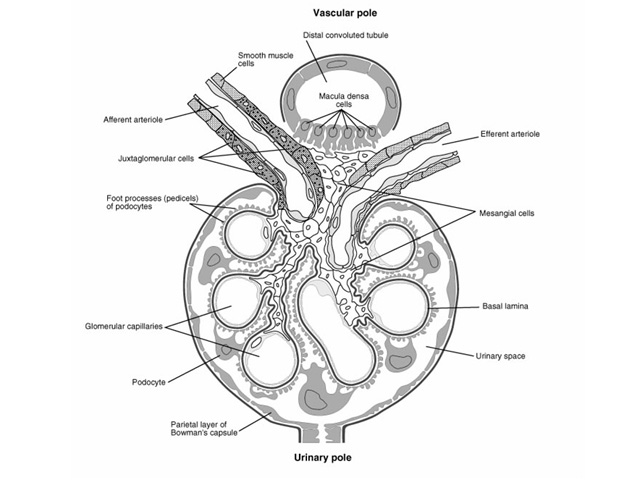Summary
Findings
In this diagram, the renal corpuscle and associated juxtaglomerular apparatus are illustrated. The renal corpuscle consists of a capillary tuft (glomerulus) protruding into the space defined by Bowman's capsule that drains into the proximal convoluted tubule at the urinary pole. Fenestrated capillary endothelium, podocyte processes and the basal laminae of both cells form the filtration interface. At the vascular pole, the juxtaglomerular apparatus consists of the juxtaglomerular cells of the afferent arteriole and the macula densa cells of the convoluted distal tubule.
Comment
The renal corpuscles filter blood delivered by the afferent arterioles. The blood ultrafiltrate drains into the proximal convoluted tubules. The juxtaglomerular apparatus senses the osmolarity of the filtrate in the distal convoluted tubule and responds by secreting renin from the juxtaglomerular cells of the afferent arteriole.
Specimen
Renal corpuscle
Image Credit
Andrew P. Mizisin, Ph.D.Department of Pathology
School of Medicine
University of California, San Diego
Katsumi M. Miyai, M.D., Ph.D
Department of Pathology
School of Medicine
University of California, San Diego

